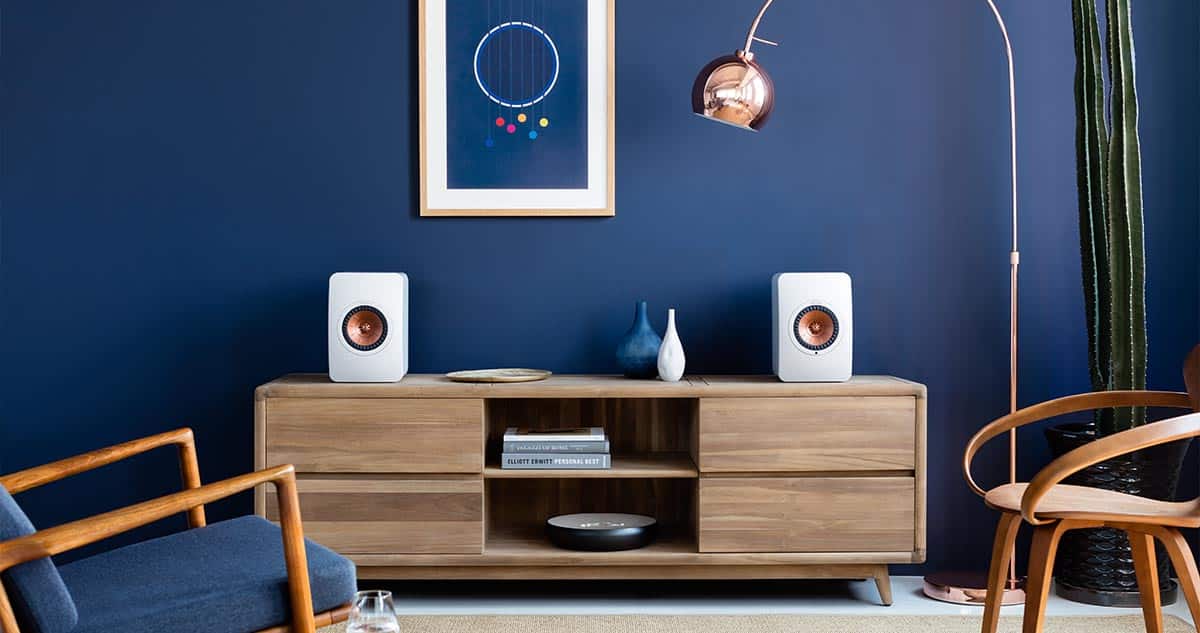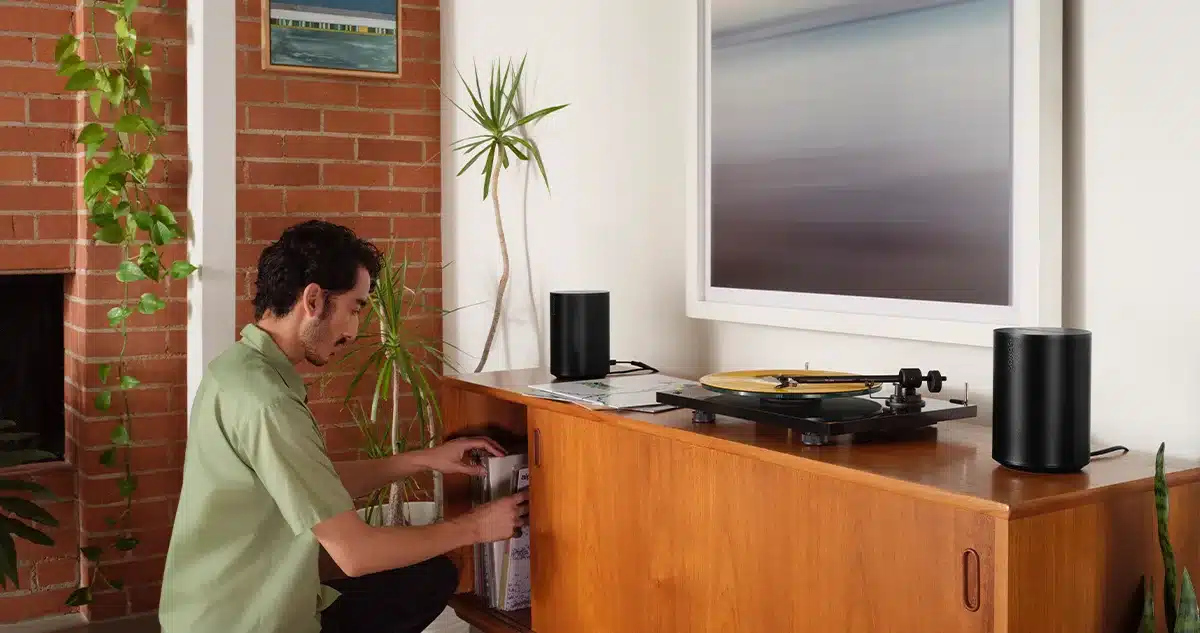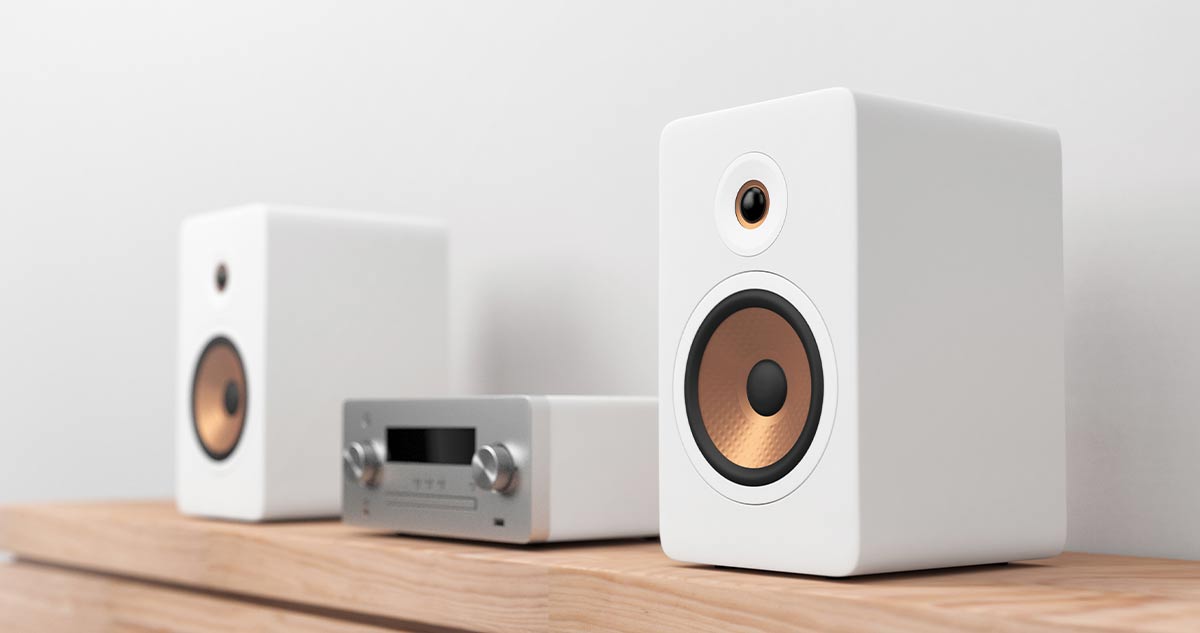Sound systems have grown more versatile since the days of 44-minute run-time bulky vinyl records. Today’s music systems demonstrate we’re in the golden age of audio; we can choose any size, shape, or form of digital or physical music we could possibly want.
There’s one audio form beginning to rise above the rest: high-quality sound in tiny cases. Whether more people are looking for a portable speaker that brings a powerful sound wherever they go, or a complete hi-fi system that’s easy to maneuver from room to room in your home, the demand for a big sound in a small package is popular. Thankfully the options are growing in quality and more widely affordable. Here is Rivas Tech Group’s guide to smaller hi-fi.
What is Tiny Hi-Fi?
For a classic hi-fi system, you only need an audio source, amplifier, and speakers. You can purchase these components as individual pieces, fully integrated stereo speakers, or a combination of the two. Tiny hi-fi simply means you have a smaller scale setup, but you still can play vinyl, CDs, or wireless Bluetooth. We subscribe to the belief that integrated sound is superior to the single wireless speaker; even if you lack the available space, there’s no reason to sacrifice sound quality. If you already own a few music sources and supplies, you can incorporate them into a slightly bigger system.

The Differences Between Micro and Mini Hi-Fi
The two categories of tiny hi-fi systems are “micro” or “mini,” but how do they differ from one another? Let’s examine the differences between the two by using CD-playing capabilities as an example. If you’d like a little compact unit for your home office or cozy lounge space, a micro hi-fi system will be your best bet. These systems tend to include an AM/FM radio tuner, a CD player, and sometimes an iPod dock. These speakers emit between 10 and 30 watts per channel, so they are the less powerful sound option between the two. However, a small space doesn’t necessarily require a booming sound.
If you’re looking for a slightly louder solution, a mini hi-fi system is more suitable for a public space or a larger home. These incorporate a multi-disc CD player that holds 3 to 5 CDs, with more powerful speakers between 30 and 100 watts per channel. A few mini systems even include a separate subwoofer for all your bass handling needs. Both of these systems include speakers, but not all include audio sources, and depending on if you want vinyl, CDs, or MP3 files, you may have to purchase a separate source. Be sure the model you opt for is compatible with your desired source for music.
Audio Sources with Hi-Fi Systems
You can listen to a blend of formats on both mini and micro systems. Nearly every hi-fi system can play CD-R and CD-RW formats, for example. More modern systems also feature MP3 playback, so even CDs containing ripped audio are 100% playable. Nowadays, it’s common to see a radio and iPod capabilities so you can mix up your music sources as you please. A USB input is available on certain systems so you can attach and stream from your cellphone or a flash drive, and specialized systems include sources like a tape deck or turntable for cassettes or vinyl records. If you want to use a music source that’s less common, be aware that you may have to purchase a few more elements and build a system that isn’t so mini.

Keep an Eye On These Features
Understanding power levels is essential for mini and micro systems. A power level of 20 watts will emit clear audio for a living room, but if you’re seeking a louder sound that reaches through more rooms, a system of up to 100 watts may be necessary. Some systems will list the power output per channel, while others list only the total.
Certain hi-fi systems include DVD and CD playback. A TV speaker will never stand up to the audio quality of a hi-fi speaker, and when you include an amplifier on top, you enjoy more detailed volume control. If a full home theater audio system feels a bit too out of your budget, a sound system incorporating a DVD player will offer excellent sound quality for any movie you watch.
Are you a fan of listening to the radio? There are many systems in which you can save stations to create preset channels. This is the best option for moving between all your beloved stations without having to manually tune to a new frequency every time you want to hear something new.
Classes are assigned to each audio system, and Class A/B/AB designs have historically been the ideal choice for superior larger systems, with Class D being the design for small systems. While Class D has a gap in audio quality compared to the other systems, it contains one of the most efficient systems with low heat dissipation, shrunken size, and lightweight forms, so it’s ideal for smaller hi-fi. Class D has also improved in recent years, and today we think it’s now worthy of broadcasting better audio, so don’t shy away if you see a Class D label on a system.
Are you considering purchasing a micro or mini hi-fi system for your house? It’s best to consult with an expert first, and our team at Rivas Tech Group is ready to design and install a system ideal for the size of your space. Contact us today to get started!
